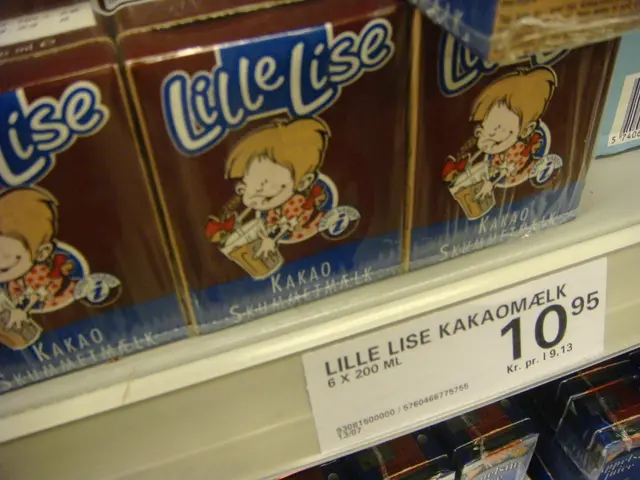Ensuring the safety and quality of our food sources through advanced fermentation techniques
Precision fermentation, a rapidly growing technology, is revolutionising the food industry by producing specific proteins and ingredients using microbes in controlled environments. This approach offers functional and sensory parity while significantly reducing environmental impact.
Companies like Perfect Day, Formo, Remilk, The EVERY Company, and Imagindairy are achieving commercial-scale production and forming partnerships with major industry players such as Nestlé, Mars, and Danone. This progress reflects strong market confidence and indicates precision fermentation is moving beyond proof-of-concept towards scalable food industry integration.
Environmental Advantages
From a sustainability and food security perspective, precision fermentation offers major advantages. It reduces reliance on land and water resources by 74–99% and 77–91%, respectively, compared to conventional agriculture. It also lowers greenhouse gas emissions by 37–87% relative to traditional protein production. Furthermore, it enables on-demand production in controlled environments, increasing supply chain resilience.
Economic Outlook and Challenges
The global precision fermentation market was valued at approximately $3 billion in 2024 and is projected to grow dramatically—reaching over $54 billion by 2032, with a compound annual growth rate (CAGR) of 43.5%. However, the industry faces substantial challenges, including the need for significant investments ($500 billion by 2040) for capacity expansion, regulatory navigation, talent acquisition, consumer acceptance, and cost reduction to achieve price parity with conventional proteins.
Creating a Circular, Low-Waste Bioeconomy
In terms of creating a circular, low-waste bioeconomy, precision fermentation can enable tailored production of ingredients that minimise feedstock waste, use of renewable feedstocks (e.g., agricultural by-products) as fermentation inputs, reduced emissions and resource consumption tied to food production, and potential integration with biorefinery and waste valorization systems, strengthening circularity.
The UK's Deep Branch and Beyond
Deep Branch, a UK-based company, is using microbes to convert carbon dioxide into sustainable protein for animal feed. This approach is slightly different as the microbes are an ingredient in the final product. Other companies like Protera are developing protein ingredients that can improve the shelf life of baked goods like bread.
The food security crisis highlights humanity's dependence on plant crops and animal farming for food production. Precision fermentation could provide a resilient, scalable protein supply with low waste. The Israeli firm ImaginDairy recently raised $28 million to fund the development of dairy proteins produced via precision fermentation. Solar Foods is developing a way to convert carbon dioxide from the air into sustainable protein using just a vat of bacteria and electricity.
In conclusion, precision fermentation is at an advanced stage with real-world commercial applications that are reducing environmental impact and enhancing food system resilience. Its future potential to address food security depends on overcoming scale, cost, regulatory, and acceptance challenges, but it stands as a key enabling technology for a circular, low-waste bioeconomy and sustainable global protein supply.
Key points:
| Aspect | Current State | Future Potential | |-----------------------------|-----------------------------------------------------|--------------------------------------------------------| | Technology maturity | Commercial production of animal-identical proteins | Scale-up to price parity and broader ingredient scope | | Environmental impact | 74-99% less water, 77-91% less land use | Integration into circular bioeconomy, waste valorization | | Market size | $3B in 2024, growing at 43.5% CAGR | $54B+ by 2032 with large investments needed | | Challenges | High capital and regulatory costs, consumer acceptance | Cost optimization, regulatory clarity, consumer education | | Role in food security | Reduces dependence on traditional agriculture | Resilient, scalable protein supply with low waste |
This technology is widely regarded by industry experts and organisations as one of the most promising innovations for sustainable and resilient food systems in the coming decades.
- The biotech startups Perfect Day, Formo, Remilk, The EVERY Company, and Imagindairy are investing heavily in precision fermentation technology, and have formed partnerships with major pharmaceutical companies like Nestlé, Mars, and Danone, signifying a strong market confidence and a potential shift towards scalable food industry integration.
- From a lifestyle perspective, precision fermentation could significantly impact the food industry by providing animal-identical proteins with reduced environmental impact and enhanced food system resilience.
- In the field of education and self-development, the rapid growth of precision fermentation raises important questions about the role of science and technology in solving general news issues such as food security, climate change, and sustainability.
- The sports and medical-conditions sectors may also benefit from precision fermentation, as companies like Deep Branch are using microbes to convert carbon dioxide into sustainable protein for animal feed, and Solar Foods is developing a way to create sustainable protein using just bacteria, electricity, and carbon dioxide from the air.
- Financial institutions and investors are expressing increasing interest in precision fermentation, with the global precision fermentation market projected to grow from its current value of approximately $3 billion in 2024 to over $54 billion by 2032, at a compound annual growth rate (CAGR) of 43.5%.
- As precision fermentation advances, it presents the opportunity to create a circular, low-waste bioeconomy by enabling tailored production of ingredients that minimize feedstock waste, using renewable feedstocks as fermentation inputs, and reducing emissions and resource consumption tied to food production.




